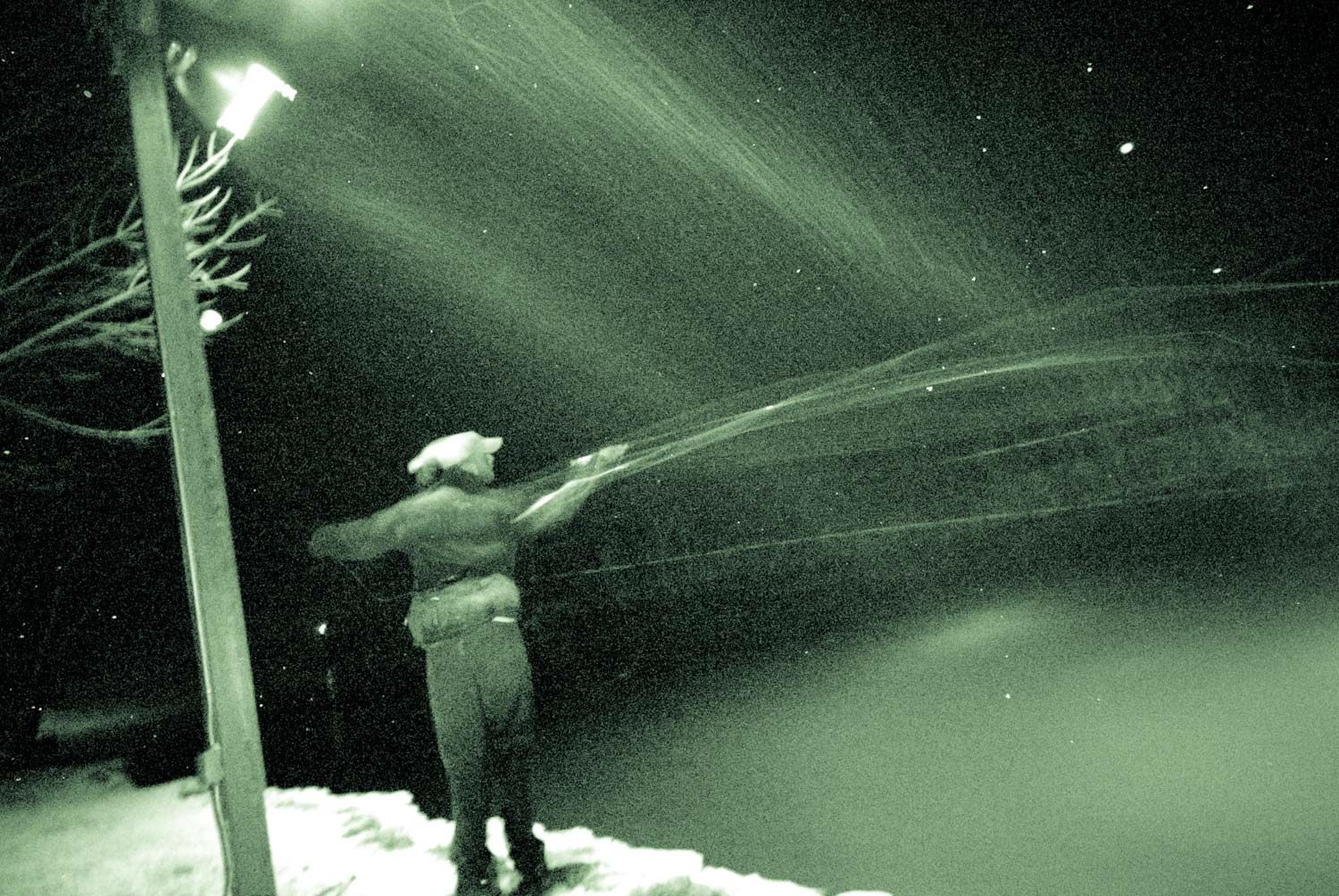It’s long been known by fishermen, that bright lights shining on the water at night create fishing hotspots.
The lights attract plankton, which in turn, attracts the baitfish and other food sources that feed on them. Once you’ve got a good concentration of forage food hanging around the lights, it doesn’t take long before the larger predatory gamefish move in and begin making a feeding frenzy of the situation at hand. Using the lights as a perfect tool to coax and gather the food into a small area and the cover of darkness as camouflage, predatory gamefish will take turns darting into the light with mouths open to pack their bellies full. This feeding scenario reminds me very much of the relationship I have with my refrigerator. When I wake up in the middle of the night with my stomach growling, I know exactly where I need to head to get my quick food fix. The relationship gamefish have with lights on the water at night is no different. When available, gamefish will regularly utilize lights to locate and ambush food under the cover of darkness. Fly fisherman should always take the time to locate and fish lights on their home waters, because they will almost always provide consistent action.
If you randomly asked one of your fellow fly fisherman about targeting lights at night, they’d probably respond with success stories about either fishing lighted piers in saltwater or boat docks on freshwater lake impoundments. These are by far, the two most popular places fisherman prefer to utilize lights shining on the water at night, but it’s not the only places we should look. Fishing lights for trout doesn’t come up in conversation nearly as often, but where they are available, their equally productive. Notice the picture above of me casting at night around lights on the White River in Arkansas. It accounted for multiple trophy brown trout Louis and I landed on a fishing trip during a blizzard a couple winters ago. It was so cold and windy we could only manage to stay out fishing in the elements thirty minutes at a time, so we took turns warming up and fishing all through the night. It’s a memory with my best fly fishing buddy I’ll never forget.
Keep it Reel,
Come fish with us in the Bahamas!
Kent Klewein Gink & Gasoline www.ginkandgasoline.com hookups@ginkandgasoline.com Sign Up For Our Weekly Newsletter!

As luck will have it, I am headed to SW Florida tomorrow to a place on a barrier island for a week of bliss that includes snook, reds, and seatrout on the dock lights at night. You cannot beat it for comfort and sight fishing excitement. I am using old flies I tied 20 years ago when I lived in Tierra Verde and fished off my own lighted dock. Yes, I have some great stories about fishing the lights from Naples to Tampa Bay. One of my favorite ways to fish.
The snook and tarpon will absolutely gather on the underwater lights in SW Fl. I use a green mercury light on my dock, it has a ballast & photocell system. Most of the lights down here are set up similarly and green seems to be the best color. Having fished on these lights for years with fly, bait, lure etc. I can say that they are not as easy to catch as you may think. What happens is that you have a food chain going on with microscopic zooplankton showing up quickly then small baitfish feeding on zooplankton. Small baitfish will then attract larger species. The key is trying to get a fly to match the baitfish. Very small baitfish flies works like a 6 or 8, together with a longer light fluorocarbon leader, 15 pounds or less. You’ll lose some but will get more hookups. Also moving tides and full moons really get them in a feeding frenzy.
Right on, Capt. Frank. Agree in every respect.
Find lights with moving water, and move from light to light, as you will put the fish down after catching a couple fish. Only alternative is to let them rest or change flies when it slows down, which does not do as well as moving from light to light (in my experience).